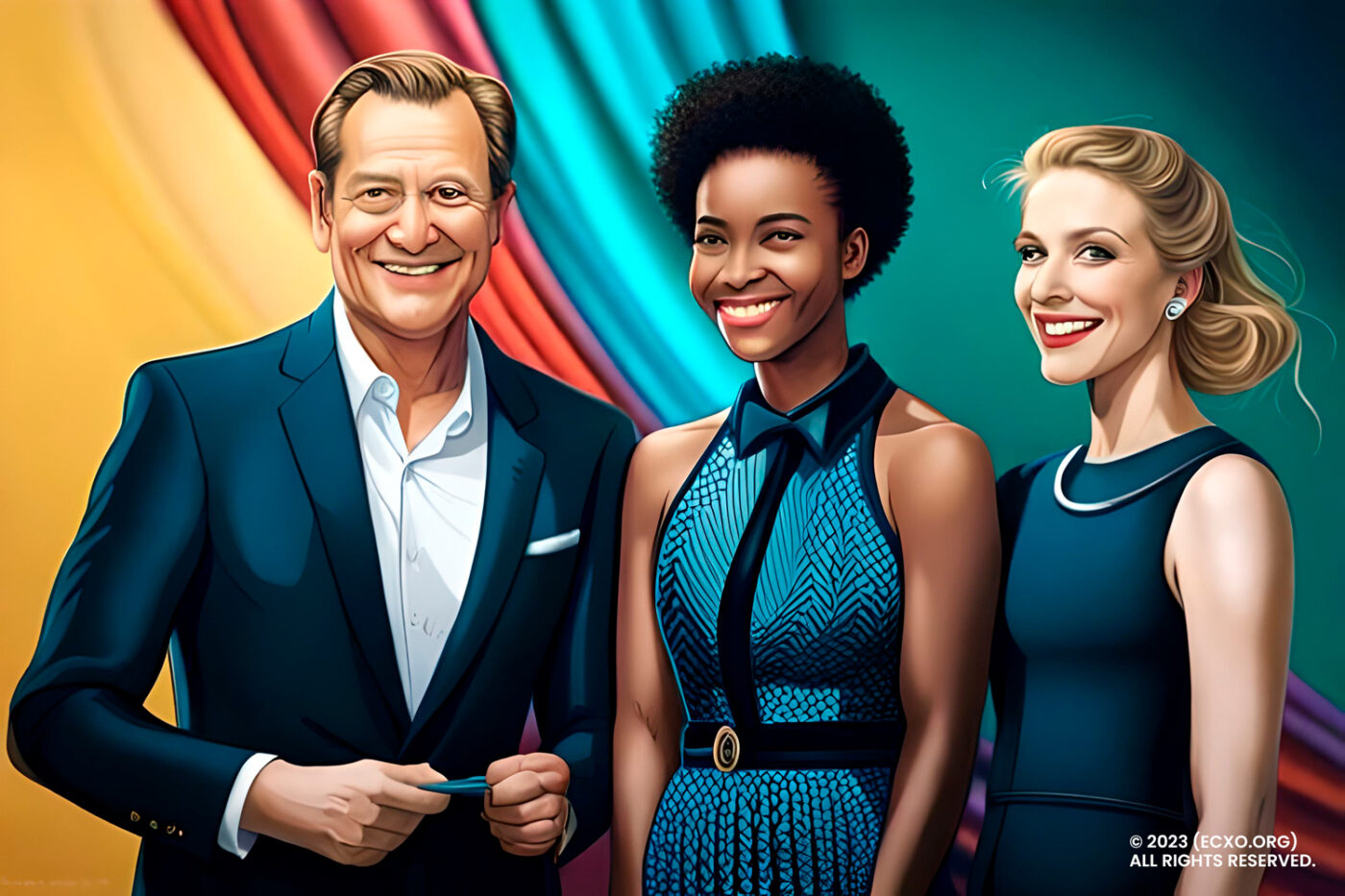Peel back the layers of many successful customer experience strategies and you’ll find that accountability sits with the Chief Customer Officer (when they have one). It also sits with the Chief Design Officer (or equivalent). Collaboration between the two leads can have a significant impact on the quality of your CX. The partnership is critical to creating a seamless and consistent customer and employee experience across all touchpoints.
Co-operation happens at different levels depending on the size and structure of an organisation. But, no matter the level, working together is crucial. The reason? High levels of customer satisfaction, loyalty and advocacy are built on well-designed user experiences; products and services that customers want and need.
Collaboration also makes it easier to measure the impact of investment if there are shared goals and KPIs. This makes it easier to prove ROI. Design team performance metrics are usually based on project delivery and the quality of the user experience and measured often by adoption rate, CES, CSAT or net promoter score per transaction, for instance or many others.
These are customer perception metrics that are important to benchmark and evaluate. Actionable feedback is always important to improve. It’s also important to understand and demonstrate the business impact of any higher levels of satisfaction and advocacy. (There are also metrics to measure increases in loyalty such as purchase frequency, average order / basket size, repeat orders etc.).
Co-operation with the CCO makes it easier to prove the business value (the ROI) of a CX improvement. This could be an increase in qualified leads / approved applications following the launch of a new app, for example.
In this article, we focus on the importance of collaboration between the CCO and CDO. We’ll explore how it happens in practice, and the wider benefits and challenges of working together. Let’s get started.
Why is the collaboration important?
The CCO is responsible for overseeing all aspects of the customer experience, while the CDO is responsible for UX; designing products and services that customers love to acquire and adopt. These two roles are closely related and have overlapping responsibilities to create a clear vision and strategy.
Co-operation is important for several reasons.
- Customer-centric design – knowing your customer is about understanding their needs and preferences (known and discovered). The CCO and CDO can share valuable data and insights that inform the design process. The design team then uses these insights to create things that people truly want. Successful CDOs understand how customers experience products and services and are relentless in working out how to improve them.
- Increased innovation – CX leaders constantly seek new ways to create value for customers. By working together, the CCO and CDO can innovate to develop new products and services that meet the current needs of customers – and anticipate the future. This creates competitive advantage in the market.
- Consistent brand experience – a partnership between the two roles helps to ensure a consistent brand experience across all touchpoints. By working together, they can develop a brand identity and compelling messaging that resonates with customers.
How does the partnership happen in practice?
Collaboration between the CCO and CDO can take many forms, depending on the structure of the organisation. But, there are common practices.
- Joint planning – the customer experience lead and the design lead work together to develop a strategic CX plan. This roadmap outlines the goals, objectives, and initiatives that will be undertaken to improve the customer experience through high-quality, purposeful design.
- Shared data and regular reviews – the two heads meet regularly to discuss customer feedback, product development, and other aspects related to the customer experience.
- Cross-functional teams – the CCO and CDO may head up cross-functional teams that include representatives from marketing, sales, and other departments. These teams work together to develop customer-centric products and services.
- Convergent Design – When the Chief Design Officer and the Chief Customer Officer or similar positions collaborate effectively, it can lead to significant benefits for the business. By working together, they can create a seamless and less complex experience for customers, which can result in increased adoption and growth. The CCO can provide the CCO with valuable insights from data analysis, which can inform and improve the creative design process. In turn, the CDO can help the CCO translate complex data into meaningful and visually compelling insights. This partnership can result in better design, more engaging customer experiences, and ultimately, increased revenue for the business.
What are the benefits?
Collaboration can be challenging due to differences in organisational structure, priorities and goals (more on this in a moment). However, the benefits of co-operating far outweigh the challenges. Some of the benefits include:
- Increased customer loyalty – customers that are ‘satisfied’ are not necessarily loyal. Working together leads to products and services that delight and offer real value. This in turn helps to create more ‘highly satisfied’ customers who are loyal, willing to recommend, and more inclined to stay.
- First mover advantage – companies that collaborate between the CCO and CDO have a competitive advantage over those that don’t. They often develop products and services that are first to market, resonate with customers and set design standards.
- Increased revenue – by developing products and services that create value and make customers’ lives easier, companies can increase revenue and market share. Loyal customers are, on average, worth up to 10x more than their first purchase, according to Invespcro.
- Easier to show ROI – as earlier discussed, it’s easier to measure performance when cross-functional teams work together and there are shared goals to benchmark. This then makes it easier to demonstrate a clear link between CX investment and better outcomes – for the business and customers.

Silo mentalities – how to overcome one of the biggest challenges
Overcoming silo mentalities is probably one of the biggest challenges for any business striving to improve their CX. The most effective customer experience strategies tend to be organisation-wide and design-led. To be truly customer centric – silos need to be broken down – across the business. Every element needs to line up to deliver the plan – your culture, people, products, services, capabilities, processes and technology. Co-operation is essential. If the CCO and CDO lead cross-functional teams this can help to start to build a company-wide approach to customer experience.
How does this all work in reality? Seven best practice examples
Here are seven companies around the world that have successfully implemented collaboration between the CX and design leads.
- Europe – Philips, a multinational electronics company based in the Netherlands, has integrated customer experience and design into its business strategy. The company’s Chief Design Officer and Chief of Customer Experience work closely together to create products that are not only functional but also appealing to customers.
- Middle East – Emirates, the Dubai-based airline, is known for its excellent customer experience. Collaboration between the customer and design leads ensures that all touchpoints – from booking to boarding – are well-designed and user-friendly.
- APAC – Alibaba Group, a Chinese multinational technology company, has a dedicated User Experience Design team that works closely with the company’s Chief of Customer Experience to create seamless experiences for customers. The team also conducts user research and tests prototypes to ensure that the products meet customer needs and expectations.
- North America – IBM, the US tech giant has a Chief Design Officer who works closely with the Chief of Customer Experience to ensure that the company’s products and services meet customer needs. The company has also established design thinking workshops and training programs to help employees across different departments develop a customer-centric mindset.
- BMW (Europe): BMW’s ‘Innovation Lab’ is a cross-functional team that brings together designers, engineers, and product managers to create new products and services that improve the customer experience. The team works on projects ranging from autonomous driving technology to electric vehicle charging stations.
- Hyundai (South Korea): Hyundai has a ‘Design Centre’ that brings together designers, engineers, and product managers to create vehicles that meet customer needs and provide a great driving experience. The centre has won several awards for its innovative designs.
- SAP (Europe) – SAP’s ‘Design Thinking’ methodology encourages cross-functional collaboration to solve complex business problems and create products that meet customer needs. The company also has a dedicated team of designers and product managers that work collaboratively with other teams to create innovative software solutions.
To sum up
Great experiences are built on wow, not adequate. Companies from all over the world, including Europe, China, and South Korea ensure that their customer and design leads work together. Teams are attuned to customer needs and wants. This means they create innovative products and services that customers love, which helps to increase loyalty and advocacy in both B2B and B2C.
Cross-functional collaboration is a key ingredient for creating great customer (and employee) experiences. A partnership between your customer and design leads that breaks down silos is a good place to start. Developing a partnership between your CCO and CDO creates the right mindset and approach to deliver better outcomes for the business and customers. Shared goals and metrics makes it easier to measure and demonstrate the impact of CX initiatives.
What are your thoughts?

This finding from McKinsey on the sheer number of companies that aren’t reaching their full design potential is striking. McKinsey puts the figure at 90%. Is it time to rethink the way the way your customer and your design leads work?
Here are a couple of questions to think about.
- Why do you think that connecting CX with design – from the top down – can be beneficial to you organisation?
- What are the challenges you face in building a more collaborative approach to CX with design+ customer in your mind?
- How do your customers experience your products and services? Are you struggling with customer loyalty and advocacy? What could you do better?
- What’s the return on your CX+ Design strategy? Are you able to demonstrate a clear link between your design investment and tangible business results driven by higher levels of customer satisfaction, loyalty, advocacy and ROI?
Article and image source: ECXO:org




